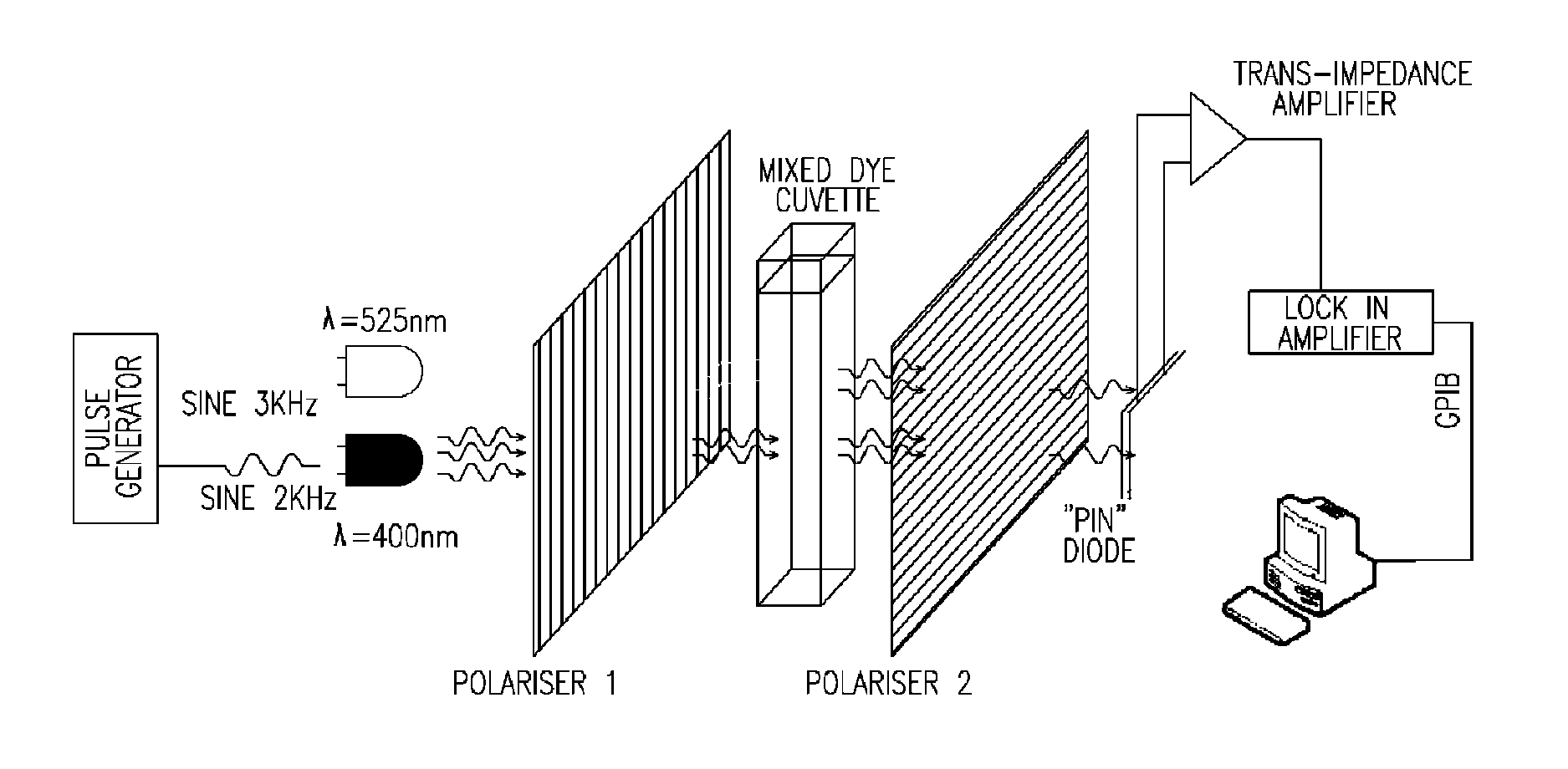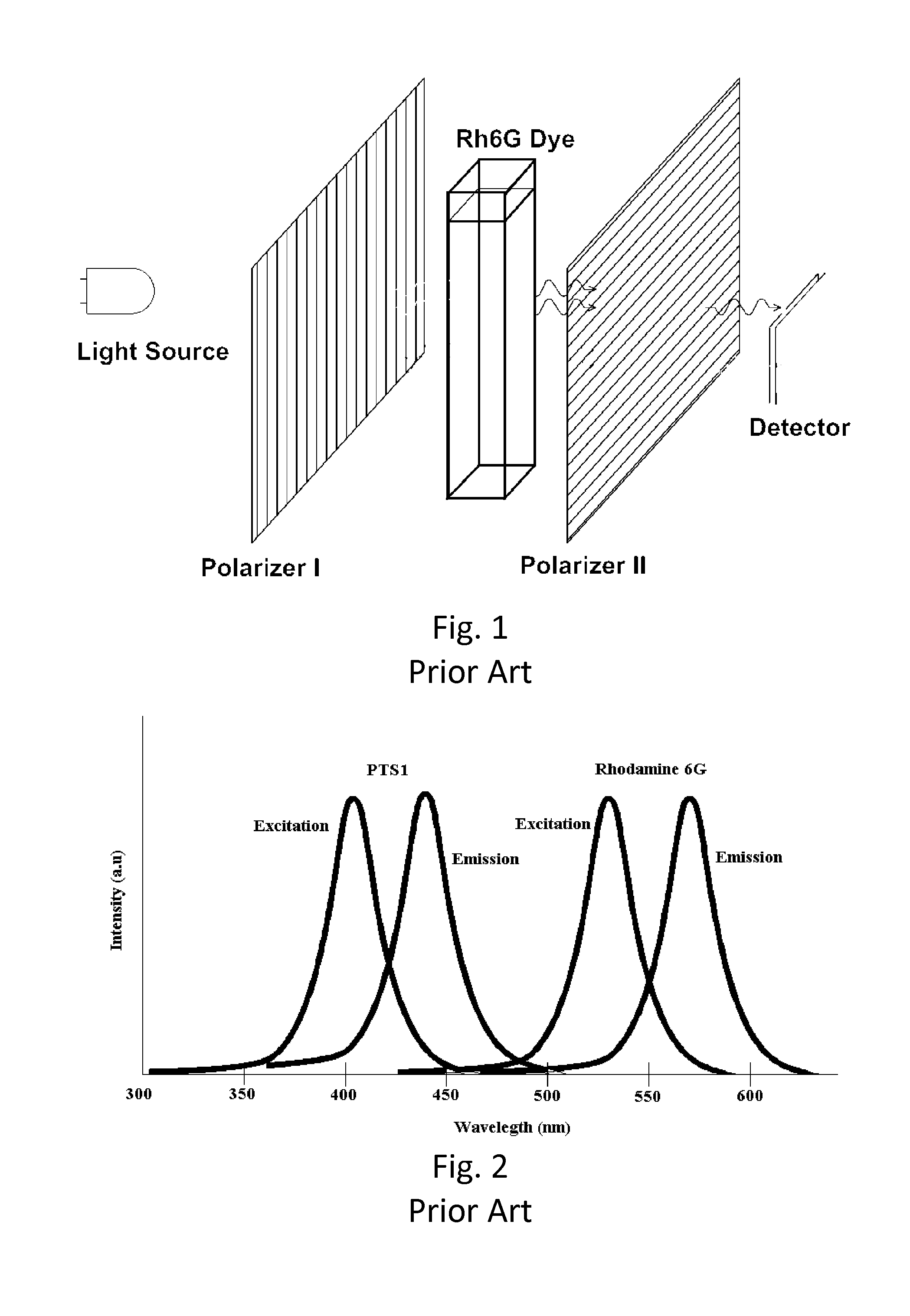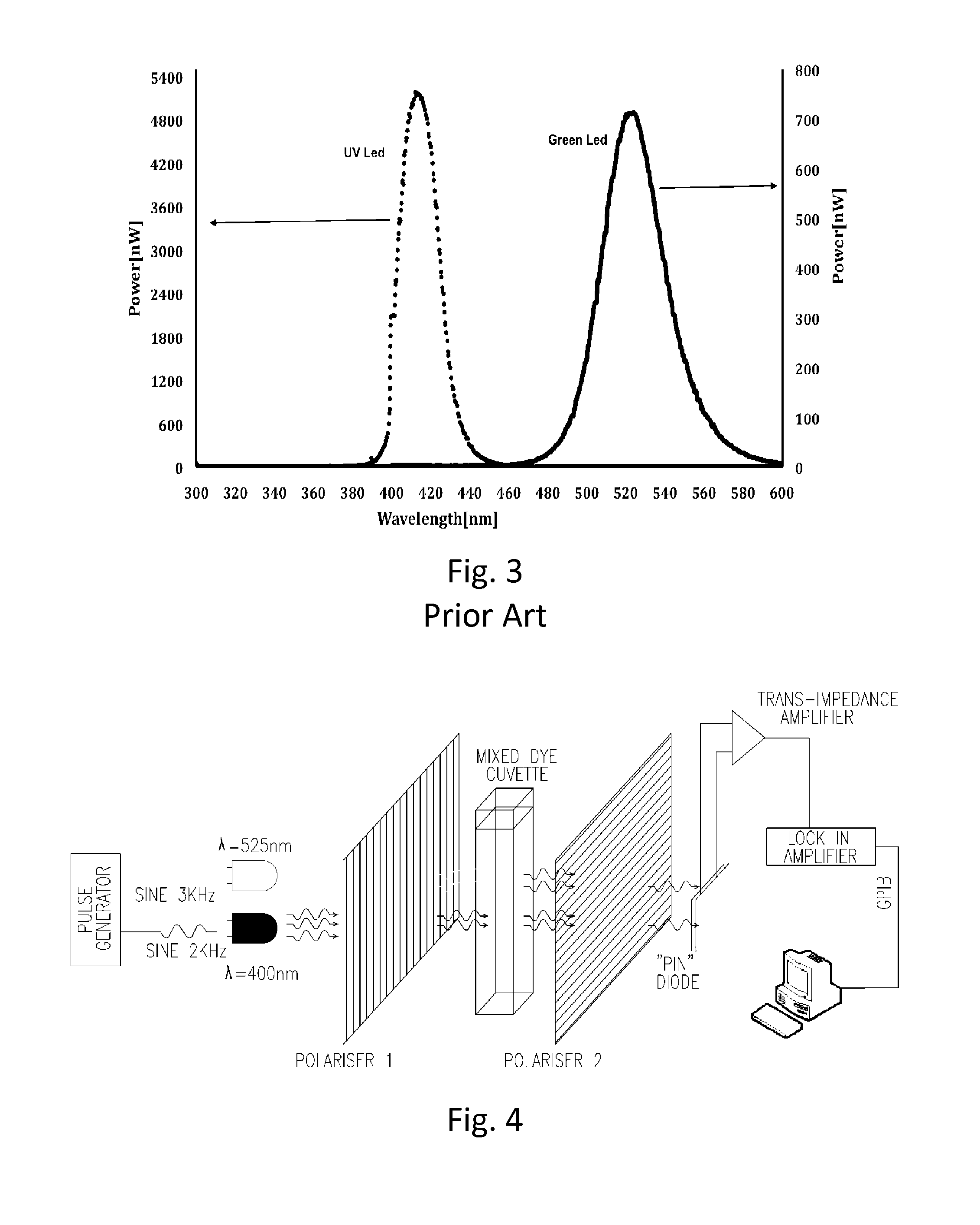Simultaneous, single-detector fluorescence detection of multiple analytes with frequency-specific lock-in detection
a single-detector, simultaneous technology, applied in the direction of fluorescence/phosphorescence, luminescent dosimeters, optical radiation measurement, etc., can solve the problems of reducing the detection efficiency of single dyes, so as to achieve high-quality simultaneous emission analysis
- Summary
- Abstract
- Description
- Claims
- Application Information
AI Technical Summary
Benefits of technology
Problems solved by technology
Method used
Image
Examples
Embodiment Construction
[0051]Experimental Setup
[0052]A. Dyes
[0053]For proof-of concept, two different fluorescent dyes having different excitation wavelengths, as shown in FIG. 2, were selected. To use this method, it is necessary for the two dyes to have distinct excitation wavelengths. As will be discussed, it is the frequency of the response, and not the color, that a locked-in photodetector detects; the two dyes could overlap in emission wavelength and still be distinguished by lock-in detection.
[0054]The dyes selected are Rhodamine 6G (Rh6G), which has an absorption maximum at 530 nm and a peak emission wavelength of 566 nm; and trisodium 8-methoxypyrene-1,3,6-trisulfonate (PTS1) which has its absorption maximum at 404 nm and a peak emission wavelength of 430 nm. Both the emission and excitation wavelengths of the two dyes are distinct.
[0055]FIG. 3 shows the emission spectra of the two LEDS used as excitation sources. As can been seen, the green LED has an emission peak of 525 nm and extends about 10...
PUM
 Login to View More
Login to View More Abstract
Description
Claims
Application Information
 Login to View More
Login to View More - R&D
- Intellectual Property
- Life Sciences
- Materials
- Tech Scout
- Unparalleled Data Quality
- Higher Quality Content
- 60% Fewer Hallucinations
Browse by: Latest US Patents, China's latest patents, Technical Efficacy Thesaurus, Application Domain, Technology Topic, Popular Technical Reports.
© 2025 PatSnap. All rights reserved.Legal|Privacy policy|Modern Slavery Act Transparency Statement|Sitemap|About US| Contact US: help@patsnap.com



